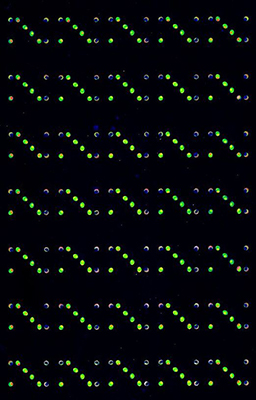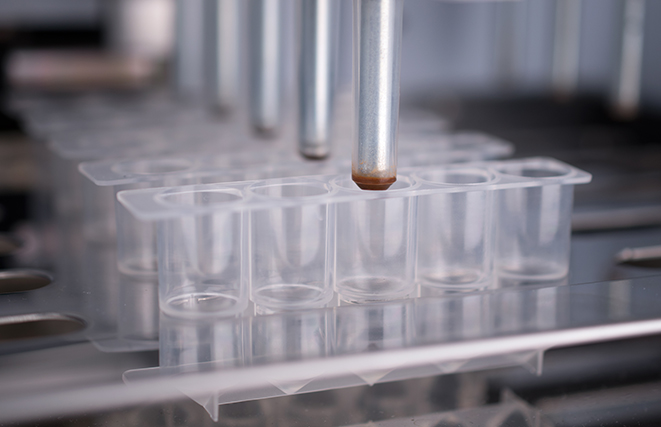Small compound (Hapten/Chemicals) Microarrays

In addition to proteins and nucleic acids (DNA/ RNA), all other types of biomolecules and chemical components, e.g. drugs, can be immobilized on microarrays. ELISAs and wipe tests for the determination of drug classes are widely used for this. Applications of small compound microarrays are e.g. the determination of patient autoantibodies against drugs such as heparin or specific microarrays for parallel detection and quantification of drugs in serum and urine.
Analogous to the protein and peptide microarrays, the small compounds are immobilized on slides and incubated with serum or urine of the patient. For some substances, detection can be performed directly using antibodies. Many of the small molecules such as drugs and medications have a molecular weight of less than 500 Da. Such small molecules usually cannot be detected via a sandwich assay. A competitive approach is used to detect these molecules.
In recent projects this technique was used to detect drugs in serum in a parallel manner. For this purpose, a total of 9 different drugs were immobilized as drug-BSA conjugate. Specific antibodies and different drugs were added to the serum and the microarray was incubated with them. If drugs are present in the serum, they suppress the binding of the specific antibodies to the immobilized drug-BSA conjugates. With increasing concentration of drug in the serum, a decrease in signal is observed.
 Fraunhofer Institute for Cell Therapy and Immunology, Branch Bioanalytics and Bioprocesses IZI-BB
Fraunhofer Institute for Cell Therapy and Immunology, Branch Bioanalytics and Bioprocesses IZI-BB